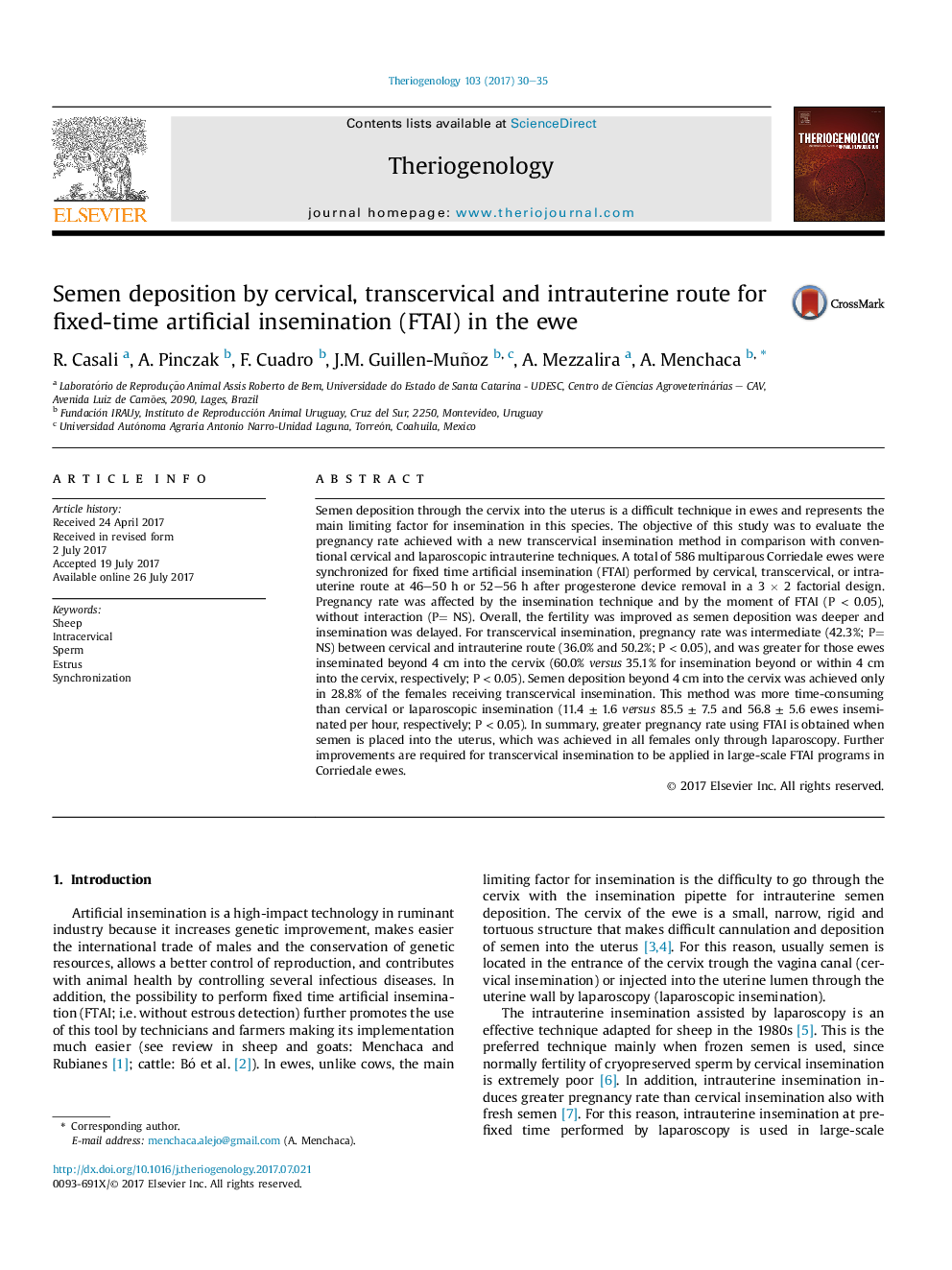| کد مقاله | کد نشریه | سال انتشار | مقاله انگلیسی | نسخه تمام متن |
|---|---|---|---|---|
| 5522899 | 1546066 | 2017 | 6 صفحه PDF | دانلود رایگان |

- A new method for transcervical insemination was evaluated in sheep.
- Pregnancy rate with this method was intermediate between cervical and intrauterine insemination.
- Pregnancy rate was improved as insemination got deeper into the cervix (i.e. beyond 4Â cm).
- Only in 28% of ewes insemination was deeper than 4Â cm into the cervix achieving â¼60% of pregnancy rate.
Semen deposition through the cervix into the uterus is a difficult technique in ewes and represents the main limiting factor for insemination in this species. The objective of this study was to evaluate the pregnancy rate achieved with a new transcervical insemination method in comparison with conventional cervical and laparoscopic intrauterine techniques. A total of 586 multiparous Corriedale ewes were synchronized for fixed time artificial insemination (FTAI) performed by cervical, transcervical, or intrauterine route at 46-50 h or 52-56 h after progesterone device removal in a 3 Ã 2 factorial design. Pregnancy rate was affected by the insemination technique and by the moment of FTAI (P < 0.05), without interaction (P= NS). Overall, the fertility was improved as semen deposition was deeper and insemination was delayed. For transcervical insemination, pregnancy rate was intermediate (42.3%; P= NS) between cervical and intrauterine route (36.0% and 50.2%; P < 0.05), and was greater for those ewes inseminated beyond 4 cm into the cervix (60.0% versus 35.1% for insemination beyond or within 4 cm into the cervix, respectively; P < 0.05). Semen deposition beyond 4 cm into the cervix was achieved only in 28.8% of the females receiving transcervical insemination. This method was more time-consuming than cervical or laparoscopic insemination (11.4 ± 1.6 versus 85.5 ± 7.5 and 56.8 ± 5.6 ewes inseminated per hour, respectively; P < 0.05). In summary, greater pregnancy rate using FTAI is obtained when semen is placed into the uterus, which was achieved in all females only through laparoscopy. Further improvements are required for transcervical insemination to be applied in large-scale FTAI programs in Corriedale ewes.
Journal: Theriogenology - Volume 103, November 2017, Pages 30-35